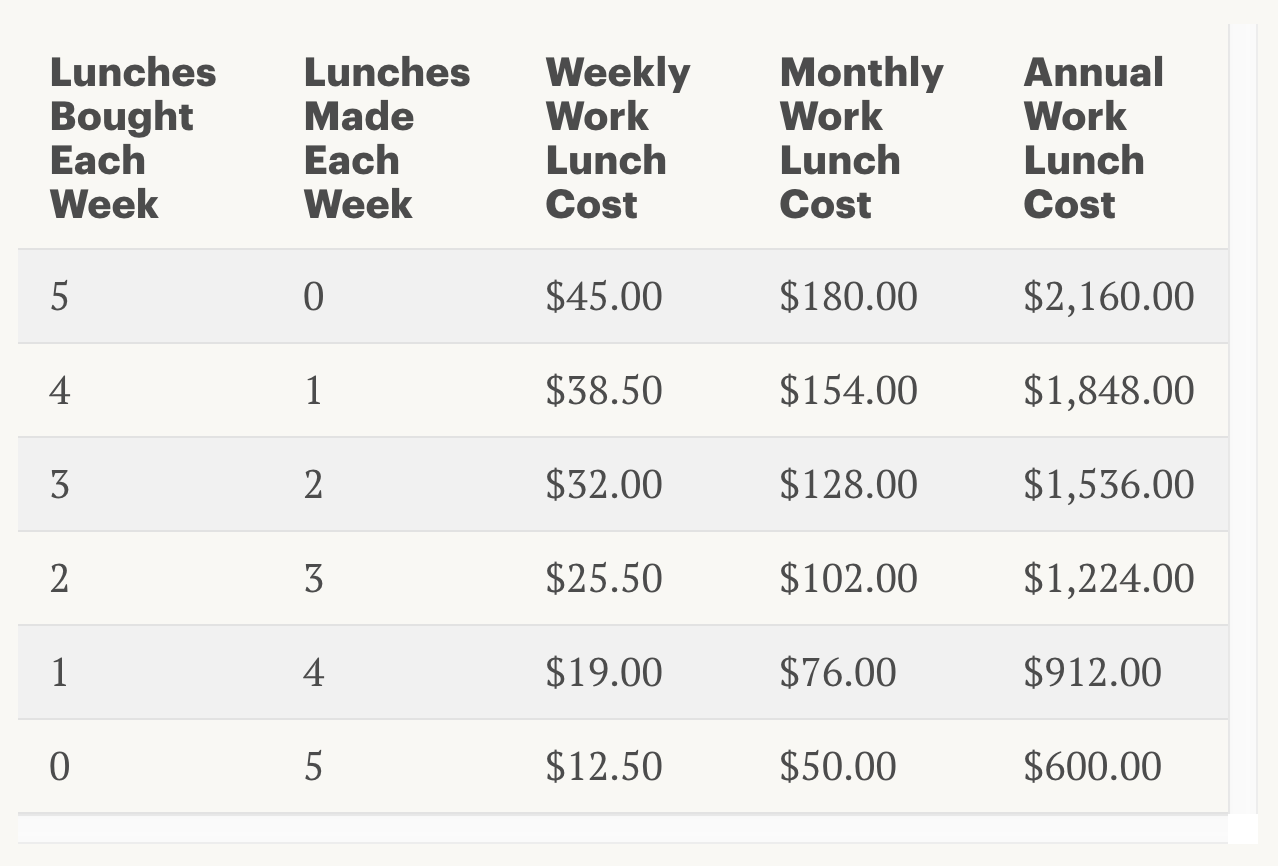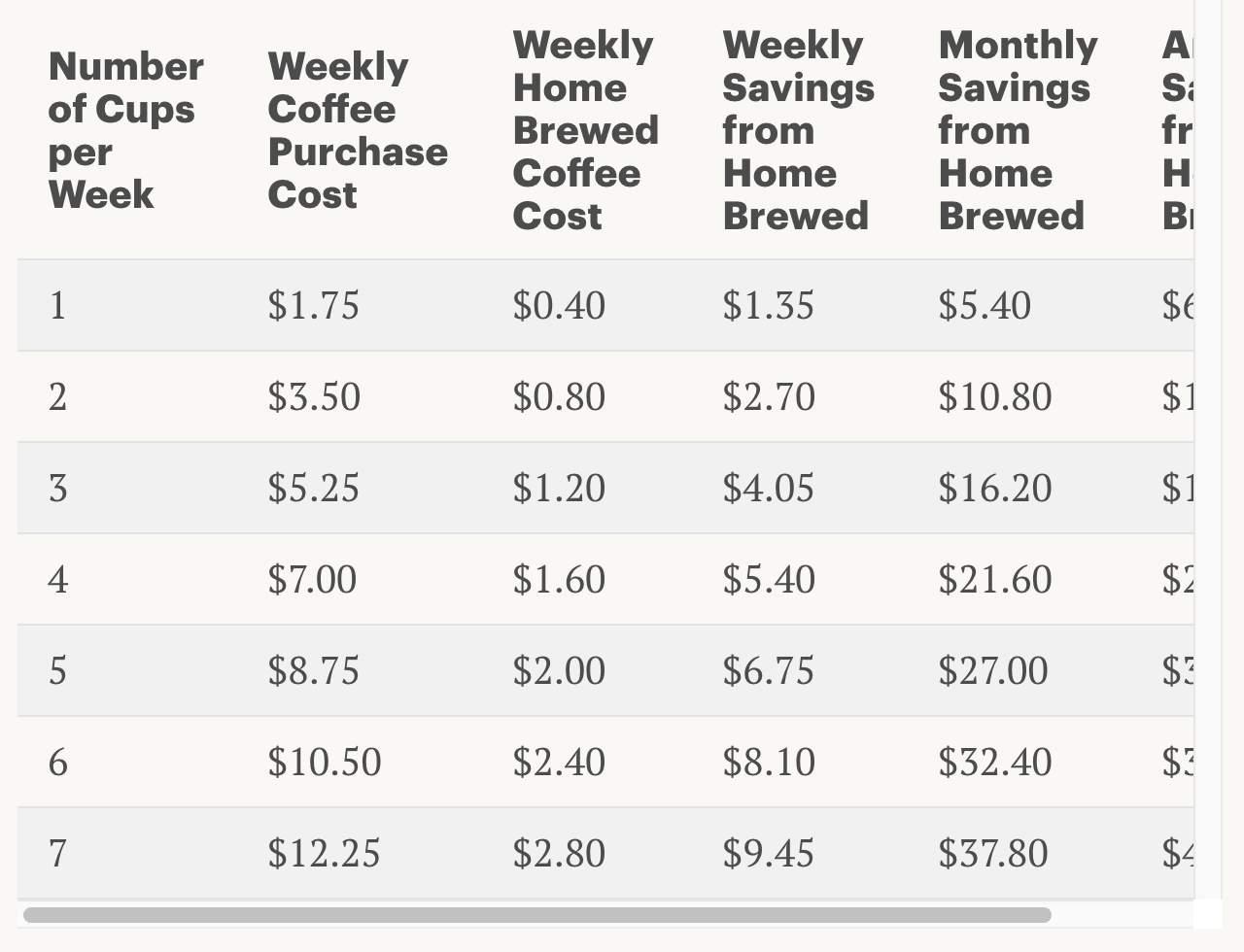Working From Home Can Save You Thousands of Dollars Every Year
I calculated a dollar value of working from home—the total was higher than I expected.
From an employer’s perspective, remote work makes a lot of sense: it means less money spent on office space, access to a talent pool less restricted by location, and possibly even higher employee productivity.
But it’s not just employers who benefit financially from remote work. Employees also save money when they work from home, which is something I didn’t fully appreciate until I joined a company that encourages remote work.
In order to better understand how much money I saved by logging in from home a couple of days each week, I calculated a dollar value for the meals out, coffee, and long commute that I avoided in the process. The total was higher than I expected.
Money saved on food
How many days each week do you buy lunch? Even if it’s not every day, it’s probably more often than it would be if you worked from home. If you were to make lunch each day at home rather than purchasing it, you would save $32.50 on food each week (assuming a lunch purchase costs $9 on average, and one made at home conservatively costs $2.50). Even comparing a traditional worker who purchases three out of five lunches each week to a remote one, the potential savings per week are $19.50. This adds up to over $900 each year. Of course, it’s still possible to bring lunch from home when you work in a traditional office. However, remote workers don’t risk forgetting to bring their lunch and don’t have the temptation of coworkers inviting them out.

Money saved on coffee
Even a purchase as small as a coffee adds up each week. This is especially true if you’re someone who buys a coffee or two every workday. As a remote worker, you are more likely to brew your own coffee each morning, and the savings are significant.
Someone who buys a cup of coffee only two times during the week could save more than $10 each month and more than $125 each year by brewing at home. For someone like me, who needs a coffee or two each day, the home-brewed savings are more than $25 per month. After a year, a remote worker’s saving would be about $324. That’s a new smartphone.

Savings on the commute
Avoiding a commute can translate to big savings of both time and money. According to one study, people who work from home in Los Angeles, where I previously lived, save around $510 annually compared to their counterparts who drive to work. Even those who work remotely half the time save around $255 per year. The average savings nationally rounds out to $222 to $444 for those working from home between 50% and 100% of the time.
Even those who prefer public transit would see a significant amount of savings by trading in their commute for a remote gig. In New York City, for example, the cost of a monthly metro pass is $121. This translates into almost $1500 each year. Of course, a public transportation pass wouldn’t only be used for commuting by a traditional worker. However, a remote worker could get away with buying much less expensive day passes or individual fare passes as needed for personal trips.
Even if it somehow cost you nothing to commute to work (perhaps you walk, or teleport), the time spent isn’t something you can get back. People who work from home even half of the time save a considerable number of hours each year. A New Yorker’s average commute is a staggering 39.6 minutes, for example, which translates into 343.2 hours each year—about two weeks’ worth of time. Someone working from home would have this time to spend on their own terms.
Commute time can also be seen as much as a financial consideration as a personal one. Take two workers who both earn $55,000 each year for a 40 hour-per-week commitment. One of them is remote while the other commutes 30 minutes each way. The commuter therefore has an additional hour tacked onto his or her schedule each day for the sake of his or her job. Consequently, he or she actually spend 45 hours each week on work. The way this comparison translates to dollars and cents is when you compare the two workers’ effective hourly wages. The remote worker earns $26.44 for each hour he or she spends on his or her job, while the commuter earns $23.50. The longer the commute, the smaller a traditional worker’s effective hourly rate becomes.
Savings per year
Regardless of which city you live in and the length of your commute, there is money to be saved by working from home. Let’s say you live in Atlanta, typically grab a coffee each morning during your commute, and purchase your lunch four days of your work week on average. Transitioning into a fully remote job would save you $324 in coffee, $1,248 in meals, and $555 in commute costs each year. You’re looking at $2,127 in annual savings.
I could have saved even more if my previous position in Los Angeles had been remote. At that job, I would usually grab a coffee once or twice each day, always bought my lunch, and drove to work, as nearly everyone does in the City of Angels. Annually I could have saved $2,524 by working from home. If the position had been 50% remote, my savings still could have been $1,262 each year.
The precise amount will vary based on your current habits and the factors of your commute, but the savings from remote work are undeniable.
Maddi is a senior member of the Content team at Go Fish Digital, a full-service digital marketing agency.



